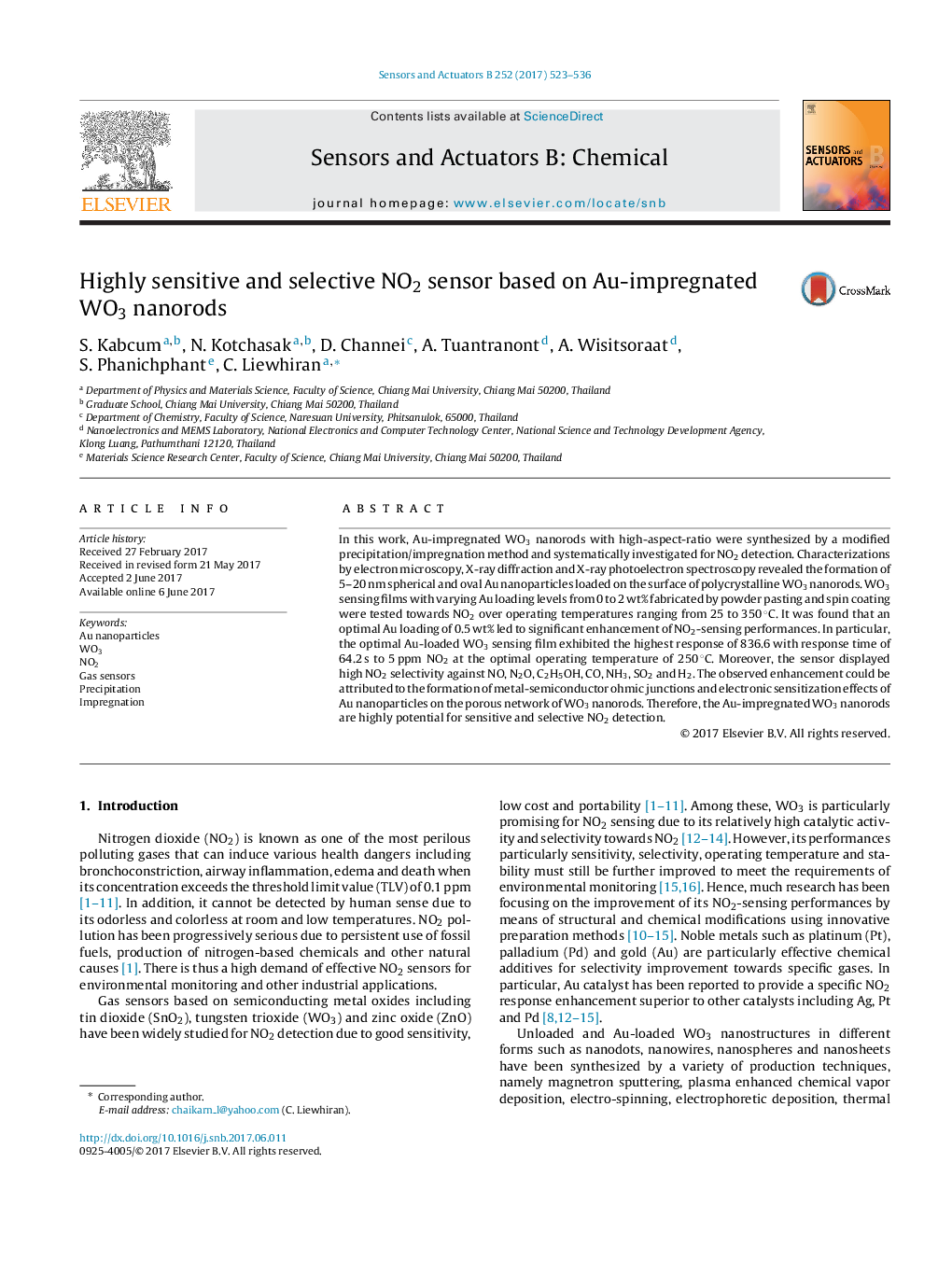| Article ID | Journal | Published Year | Pages | File Type |
|---|---|---|---|---|
| 5009103 | Sensors and Actuators B: Chemical | 2017 | 14 Pages |
â¢Precipitated WO3 nanorods were impregnated with 0-2 wt% Au nanoparticles.â¢Structural characterizations confirmed that Au nanoparticles were loaded and well dispersed on WO3 nanorods.â¢Response to 5 ppm NO2 at 250 °C was significantly enhanced from 141.8 to 836.6 with 0.5 wt% Au loading.â¢The optimal sensor exhibited high NO2 selectivity against NO, N2O, C2H5OH, CO, NH3, SO2 and H2.â¢The results were explained based on metal-semiconductor ohmic junctions and electronic sensitization effects.
In this work, Au-impregnated WO3 nanorods with high-aspect-ratio were synthesized by a modified precipitation/impregnation method and systematically investigated for NO2 detection. Characterizations by electron microscopy, X-ray diffraction and X-ray photoelectron spectroscopy revealed the formation of 5-20 nm spherical and oval Au nanoparticles loaded on the surface of polycrystalline WO3 nanorods. WO3 sensing films with varying Au loading levels from 0 to 2 wt% fabricated by powder pasting and spin coating were tested towards NO2 over operating temperatures ranging from 25 to 350 °C. It was found that an optimal Au loading of 0.5 wt% led to significant enhancement of NO2-sensing performances. In particular, the optimal Au-loaded WO3 sensing film exhibited the highest response of 836.6 with response time of 64.2 s to 5 ppm NO2 at the optimal operating temperature of 250 °C. Moreover, the sensor displayed high NO2 selectivity against NO, N2O, C2H5OH, CO, NH3, SO2 and H2. The observed enhancement could be attributed to the formation of metal-semiconductor ohmic junctions and electronic sensitization effects of Au nanoparticles on the porous network of WO3 nanorods. Therefore, the Au-impregnated WO3 nanorods are highly potential for sensitive and selective NO2 detection.
Graphical abstractDownload high-res image (280KB)Download full-size image
